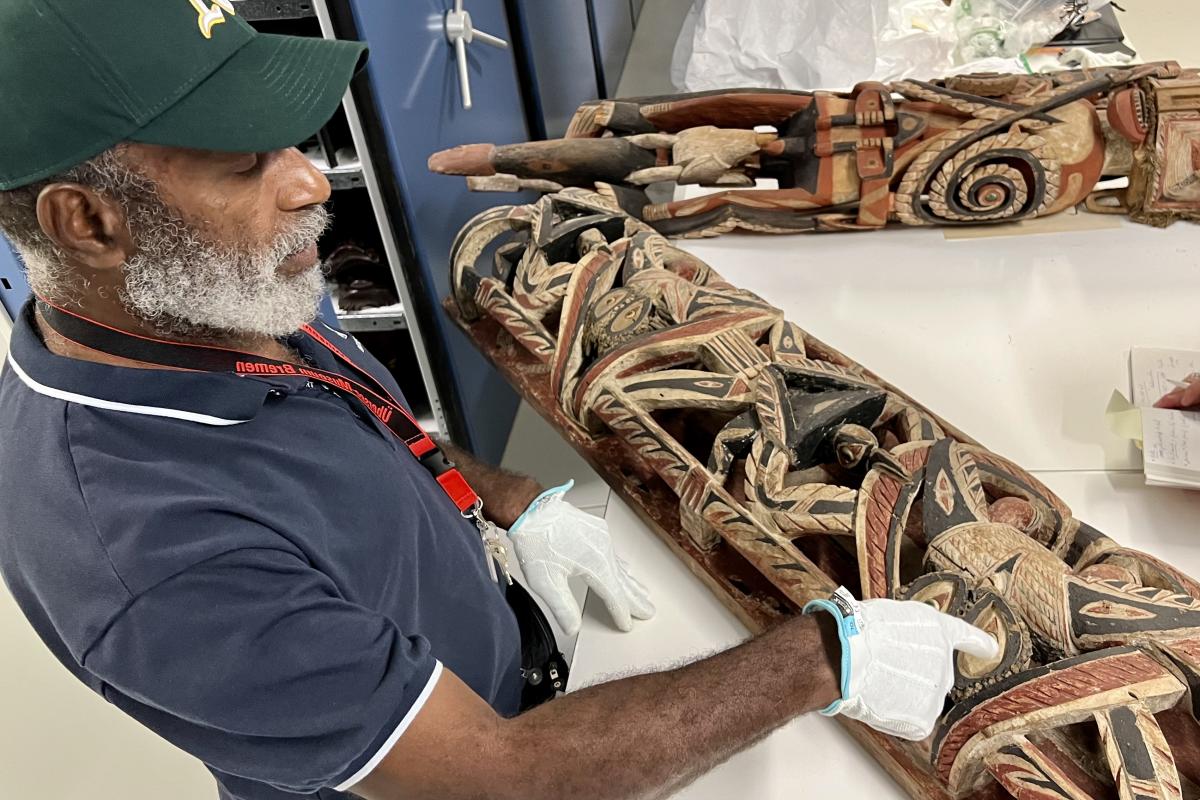In late summer of this year, Übersee-Museum Bremen was able to welcome three guests from New Ireland in connection with the project Ethnografisches Sammeln zur deutschen Kolonialzeit in “Neumecklenburg” – ein kooperatives Forschungsprojekt mit New Ireland/Papua-Neuguinea [Ethnographic collecting during the German colonial period in “New Mecklenburg” – a collaborative research project with New Ireland/Papua New Guinea], funded by the German Lost Art Foundation. An island and a province of Papua New Guinea, New Ireland has great cultural diversity including more than 20 groups of languages. Known as “Neumecklenburg” during the colonial period, New Ireland is mainly represented in German museums by its carving art, in particular malagan wood carvings. These were highly sought after among Western collectors during the colonial era. Such historical cultural artefacts are no longer available in New Ireland itself, but the province’s wood carving traditions live on. The Übersee-Museum holds 716 objects for which the place of origin is indicated as being New Ireland, with almost all of these items dating back to before 1918.
The initiative for the visit came from wood carver Adam Kaminiel. Having been in contact with the Übersee-Museum in connection with a previous project, he had heard about the large number of items from New Ireland that were located in Bremen. Kaminiel said he would like to see the carvings made by his historical predecessors and obtain photographs of the objects. For the museum, this provided an opportunity to find out more about their holdings and also obtain information for provenance research. Kaminiel and his “apprentice” Tony Lupai, who are both from the village of Madina in the Nalik language group area on the east coast of the island, were invited to Bremen, accompanied by the British linguist Professor Craig Volker, who also lives in Madina and is a member of the local community.
During their four-week stay, Kaminiel and Lupai were spontaneously able to provide an explanation of the objects’ significance. They were also able to recognise how the individual items were linked to one another, allowing provenance information to be transferred to other items. What is more, the guests were able to “demonstrate” the use of items to museum staff, allowing conclusions to be drawn about possible souvenirs. All of this was extremely helpful, since many objects are only listed in the inventories as being “house components” or “carvings”, for example. The project coordinator and the student assistant were given an introduction to the basics of malagan wood carving and symbolism.
Building on these new insights, the Übersee-Museum hopes to conduct further research to make the provenance of its collection more transparent.
With the kind support of Bettina von Briskorn







